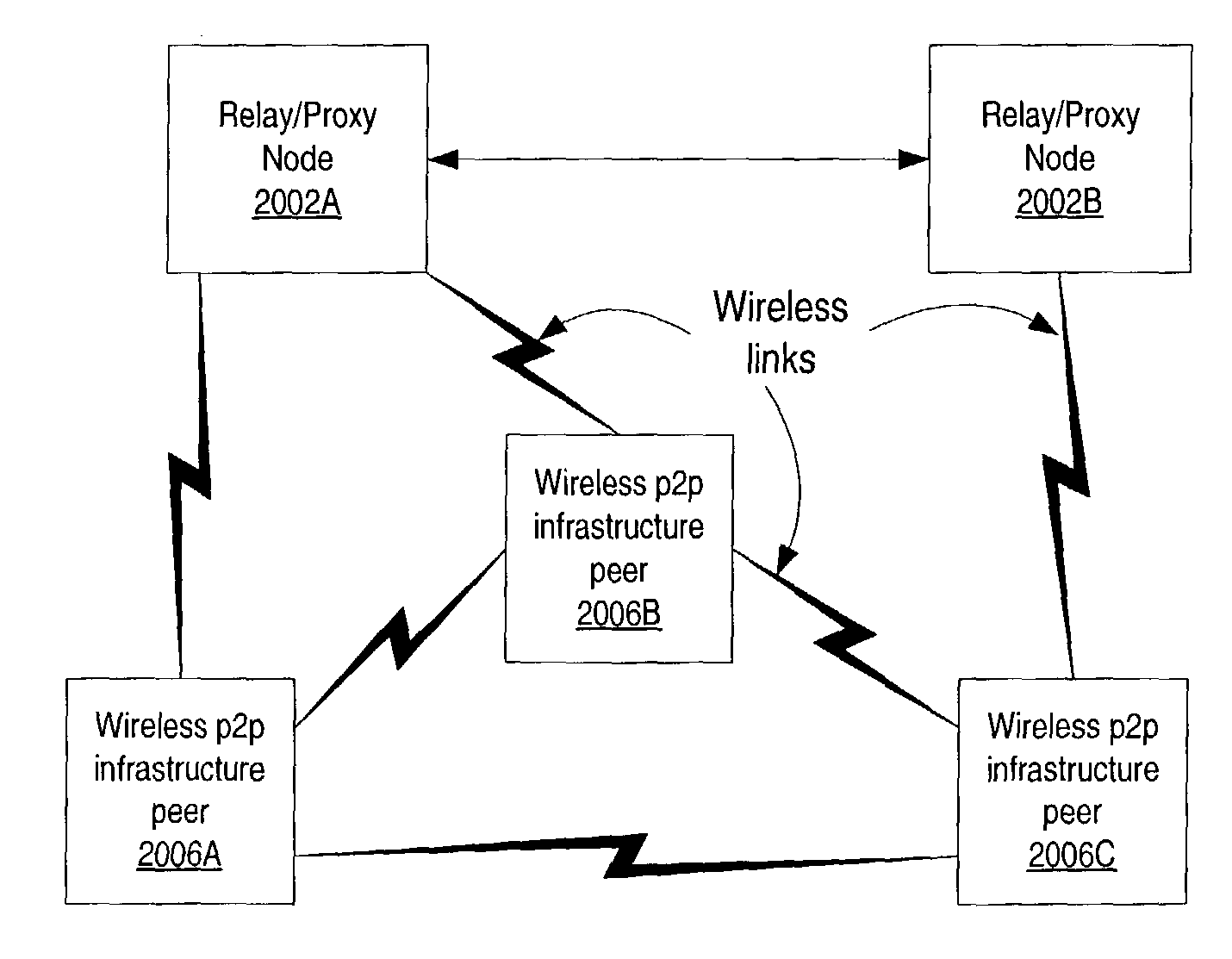Infrastructure for accessing a peer-to-peer network environment
a peer-to-peer network and infrastructure technology, applied in the field of peer-to-peer computing infrastructure, can solve the problems of not being able to locate and catalog the ever-increasing amount of information by single search engine or portal, and being unable to find useful information in real tim
- Summary
- Abstract
- Description
- Claims
- Application Information
AI Technical Summary
Problems solved by technology
Method used
Image
Examples
Embodiment Construction
[0065] Embodiments of a system and method for providing peer-to-peer capabilities to wireless devices are described. A mechanism is described that allows devices (typically small footprint, or simply "small", devices, with limited resources) to participate as peer nodes in peer-to-peer network environments, typically through wireless connections, although the mechanism may also be used across wired connections. For simplicity, this mechanism may be referred to herein as a wireless p2p infrastructure. "Infrastructure" in this instance does not refer to the peer-to-peer network infrastructure, but rather to the mechanism that may, for example, allow wireless / small devices to participate as "edge" peers in a peer-to-peer network.
[0066] Small devices may include, but are not limited to, sensors, switches (e.g. light switches), smart appliances, cell phones, pagers, wireless email devices, and Personal Digital Assistants (PDAs), though it is to be noted that embodiments may be used by vi...
PUM
 Login to View More
Login to View More Abstract
Description
Claims
Application Information
 Login to View More
Login to View More - R&D
- Intellectual Property
- Life Sciences
- Materials
- Tech Scout
- Unparalleled Data Quality
- Higher Quality Content
- 60% Fewer Hallucinations
Browse by: Latest US Patents, China's latest patents, Technical Efficacy Thesaurus, Application Domain, Technology Topic, Popular Technical Reports.
© 2025 PatSnap. All rights reserved.Legal|Privacy policy|Modern Slavery Act Transparency Statement|Sitemap|About US| Contact US: help@patsnap.com



